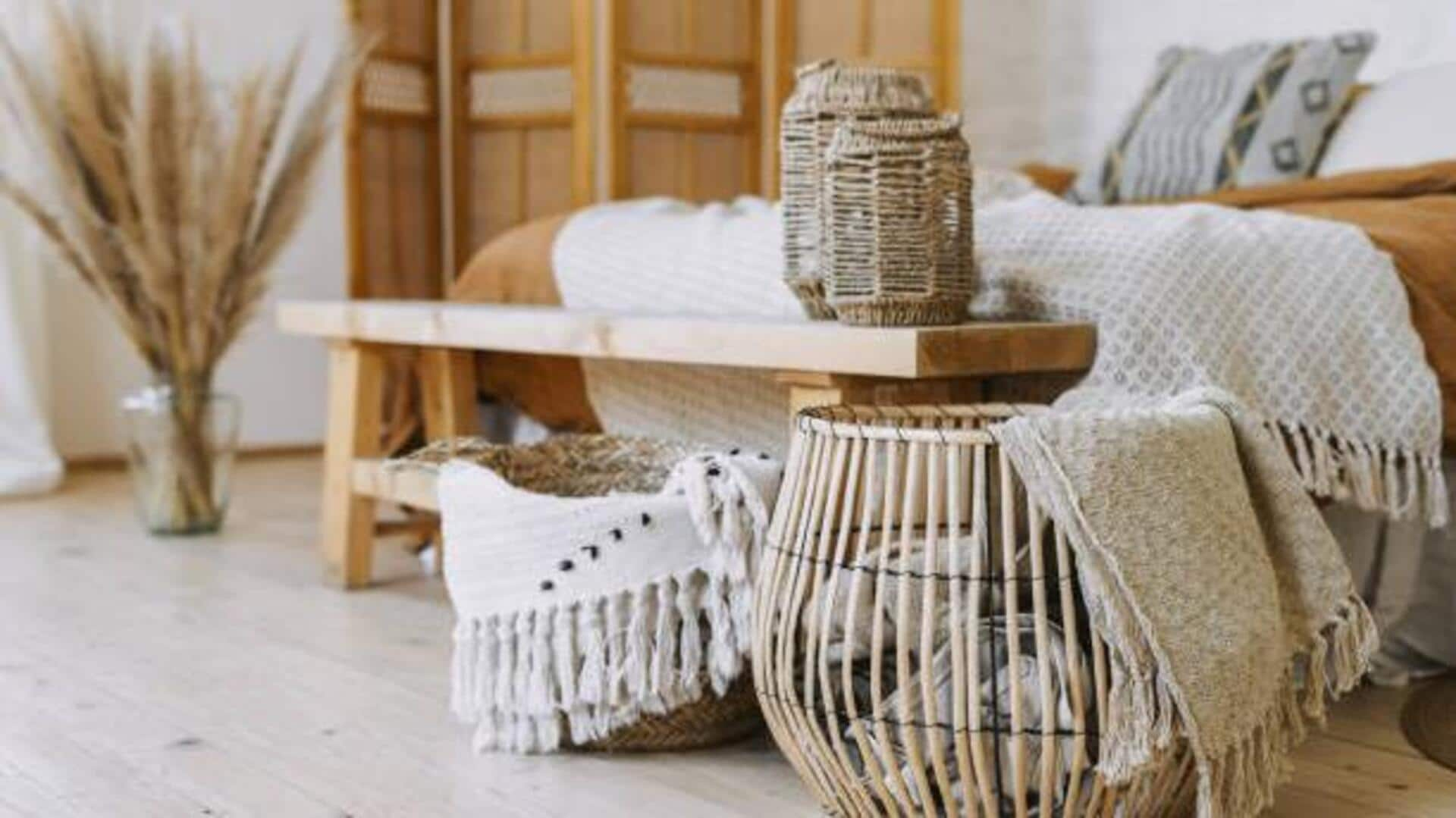
Spruce up your interiors with woven baskets
What's the story
African basket weaving is increasingly becoming a go-to sustainable decor choice. The craft, which is an integral part of African cultures, employs natural materials such as grasses and reeds. These are biodegradable and eco-friendly. The baskets' intricate designs and bright colors can lend an unparalleled aesthetic to any room. They advocate sustainable living by marrying cultural artistry with modern design.
Craftsmanship
Traditional techniques in modern homes
African basket weaving is an ancient craft with techniques passed through generations. Artisans use methods like coiling, twining, etc., to create durable and aesthetically pleasing baskets. These techniques ensure that every piece is unique, reflecting an artisan's skill and creativity. Incorporating these traditionally crafted items into modern homes not only supports artisans but also brings a touch of history and culture into everyday spaces.
Natural resources
Eco-friendly materials for sustainability
The materials used in African basket weaving are all-natural, primarily consisting of sisal, raffia, and palm leaves. These resources are renewable and sustainably harvested, without causing any harm to the environment. By opting for decor made out of these materials, consumers not only reduce their carbon footprint but also promote eco-friendly practices.
Adaptability
Versatility in home decor
African baskets are available in different shapes, sizes, and patterns, making them quite versatile for home use. You can use them as storage solutions or even as decorative pieces on walls or tables. Their versatility allows homeowners to seamlessly incorporate them into different interior styles, while adding texture and color.
Economic impact
Supporting artisan communities
Purchasing African woven baskets directly impacts artisan communities, giving them fair wages for their work. This support preserves traditional crafts while empowering artisans economically within their communities. By investing in these handmade products instead of mass-produced ones from large corporations abroad, you ensure that money goes back into local economies where it is needed most.